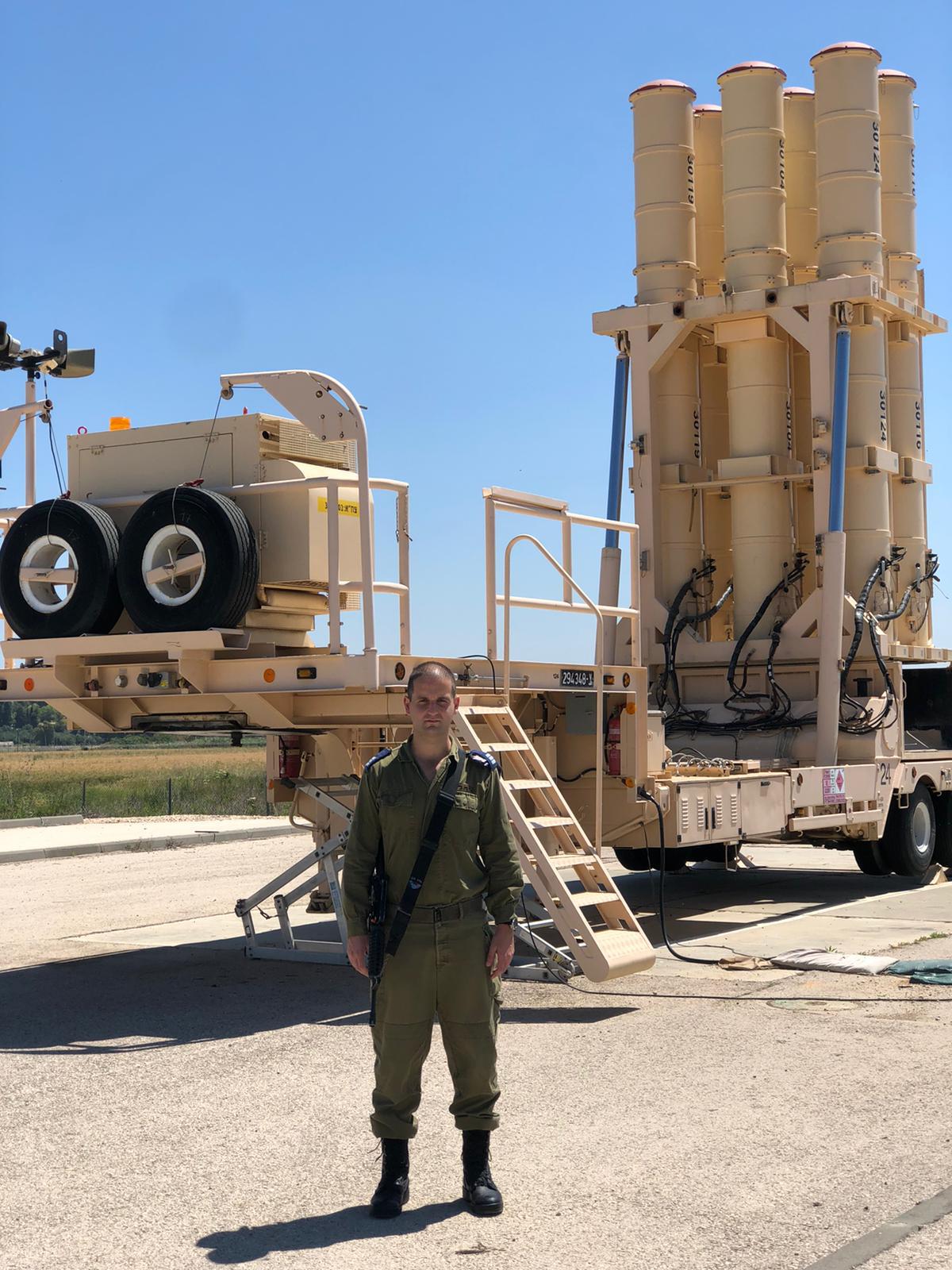Throughout the coronavirus pandemic, the Israeli Air Force’s Air Defense Array has continued to stand guard, monitoring and protecting Israel’s skies against a range of enemy threats, but with some adjustments.
“The recent period has been interesting and challenging. The air force has defined this situation as an emergency,” Capt. Moshe Admoni, an Arrow Battery Commander, told JNS. “We made a number of adjustments to deal with the situation. In the end, we are doing the same thing that we did beforehand.”
The 26-year-old commander began his military service as a soldier in the Iron Dome air-defense system. He later transferred to the Arrow system after becoming an officer and has been a part of this advanced system since 2014. In the Air Defense Array, the same unit operates both the Arrow 2 air-defense system, which intercepts ballistic missiles in the upper atmosphere, and the Arrow 3 system, designed to conduct interceptions of long-range missiles in space.
“We operate one of the weapons system that forms a part of the multi-layer defense over Israel,” said Admoni. “We work with other systems: Iron Dome, David’s Sling and the Patriot. Each operates at its own altitude.”

“We assume that this virus is circulating, that it’s around, and that there is a chance that one of our people will be infected. Even if that happens, the personnel system that we have put into place allows us to do all of the activities at the same level,” explained Admoni.
In line with the new system, the Arrow battery personnel have been divided into teams, and each team can operate the entire battery. The teams do not encounter one another.
“If someone becomes sick, and I have to isolate the team because they all met the infected person, I can continue working with the other teams, and after two weeks, the isolated team can come back,” added the commander.
This separation system is being implemented in all IAF units, although each unit is doing it in its own way to adjust to its unique conditions.
‘Our unit is a trailblazer’
Despite the changes, said Admoni, the high morale of the personnel guarding Israel’s skies is continuing to drive the unit forward. Some of the soldiers had to remain on base for many weeks and could not see their families to decrease the chances of spreading the infection.
“To see their motivation and their acceptance, their desire to stay, their understanding that the mission must continue as usual—this was extraordinary,” said the officer. “The spirit of the personnel is incredible. I think this is a strong characteristic of our military.”
Admoni also called attention to the fact that his unit contains a female deputy commander and three female soldiers, a source of pride, he noted. “This combination of male and female soldiers means our unit is a trailblazer. It has proven itself. This is important for the unit and for the air-defense array as a whole.”
Like all air-defense systems, the Arrow system is made up of a detection component, a command and control center, and interceptor missiles. “We understand that Iran and other countries have strategic weapons, and that this system provides a solution,” he said.
In July 2019, Arrow 3 took part in a successful high-altitude trial in Alaska together with the U.S. Department of Defense Missile Defense Agency, an event Admoni said was highly significant.
“The Arrow 3 interceptor [which maneuvers in space] is highly unique with very unusual capabilities. It is a pleasure to operate such a thing,” he added.
All of the air-defense systems in the Air Defense Array continuously undergo upgrades to their capabilities.
“There is very tight coordination with other layers of defense. We conduct a daily dialogue with them at the levels of headquarters and field, planning and operations. This provides the multi-layered response for all areas,” said Admoni. “The systems complete one another.”


























